Allergies have now reached epidemic proportions. Most often, it first manifests itself in childhood, having a hereditary nature. In addition to antiallergic drugs, an important role in the treatment of the disease is played by the diet for allergies in children. Choosing food for an allergic child is not an easy task. Food should not only be varied enough to supply the growing body with everything it needs, but also take into account all restrictions.
All products in the diet of a child with allergies should be introduced only with the permission of a doctor.
Meat on the allergy menu
The following types of meat may be present in the menu of a baby with an allergy:
- Turkey;
- Rabbit;
- Horsemeat;
- Lean pork;
- Young beef;
- Chicken (not allowed for all children).
If a child is allergic to cow's milk , this indicates that the baby's body reacts negatively to cow's protein. Along with milk intolerance, an allergy develops to products such as cottage cheese, sour cream, cream, butter, beef meat, sausages and sausages. Treatment is based on diet. Parents should strictly observe the restrictions, not including beef in the child's diet, even in very small quantities. Usually, a specific reaction to milk protein, subject to a diet, disappears by the age of three.
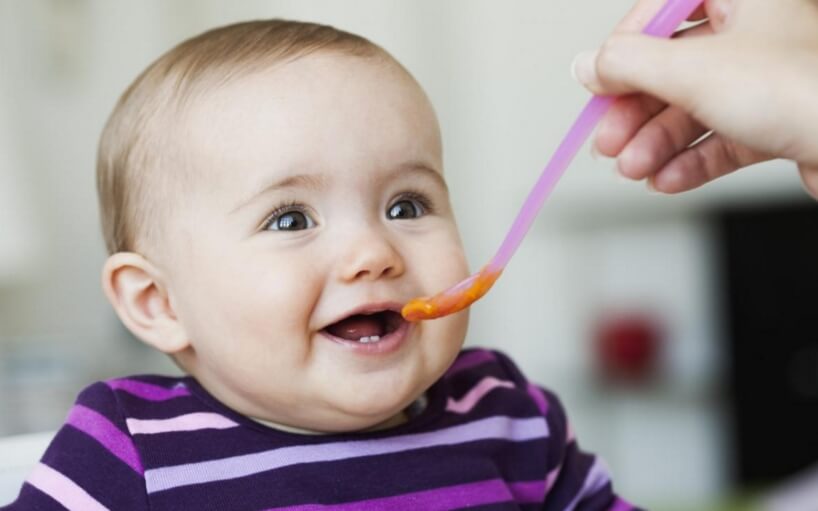
From meat for a child with food allergies, you can cook the following dishes:
- Minced meatballs (for cooking any meat, except beef, grind, add chopped onion, sometimes rice) steamed or boiled in broth, water;
- Steam meatballs according to the classic recipe (if the child is allergic to eggs, then they are not added);
- Liquid gravy with minced meat (minced meat is fried with vegetables in a saucepan, water is added and stewed until tender).
Cottage cheese for food allergies
In a child, intolerance to cottage cheese can manifest itself externally and internally. Usually, the crumbs have skin rashes, the oral mucosa swells. But external manifestations are not as terrible as the sensations of the patient during the development of an allergic reaction. The baby manifests nausea, diarrhea, vomiting, painful cramps in the stomach. It may also cause a runny nose and tearing.
The diet consists in the complete exclusion of cottage cheese from the menu. It must be remembered that during heat treatment (in casseroles, pies, dumplings), this product remains allergenic, since the reaction is provoked by a protein that does not decompose at this temperature. Parents should be especially careful when introducing cottage cheese as the first complementary foods. Curds for baby food also provoke allergies.
A reaction to curds is possible due to the unnatural composition of the product.
Eggs in the diet for food allergies
In eggs, protein provokes the reaction. It contains protein compounds that provoke allergies in babies. Interestingly, if the egg is boiled for a long time, then its allergenic properties become less expressive. In order for the harmful properties to be expressed very weakly, you need to cook the product for at least 10 minutes.
But the yolk of the egg can be included in the diet for allergies in children. Care must be taken to ensure that even a small part of the protein does not get into the yolk during separation. Otherwise, an instant skin reaction occurs. It is better not to give eggs to children under one year old at all. If the crumbs were diagnosed with an allergy to eggs, then the diet must be followed for several years. Basically, after this, the allergy disappears (to confirm this, a special test is carried out after 2 years).
Diet cereals for the children's menu
- Oatmeal;
- Buckwheat;
- boiled rice;
- Millet porridge;
- Corn;
- Pea porridge;
- Chickpea puree;
- Fresh frozen beans.

Porridges are prepared salty and sweet, adding fructose in some cases. Buckwheat and oatmeal are boiled in water. Since there are restrictions on milk for children with allergies, no butter is added. Porridge is flavored with sesame oil if desired. Raw rice is crushed before cooking and then cooked in the oven in a special clay pot. You can also steam rice with the addition of onions, minced meat and peas.
Green peas for adding to dishes with food allergies are best frozen from the summer on their own.
To prepare chickpea puree, it is boiled and then ground in a blender. The dish is suitable as a side dish for cutlets or meatballs. But from buckwheat, you can not only cook hypoallergenic porridge, but also use it as an ingredient for making cutlets. To form products, the grits must first be ground, and then mixed with minced meat. A nutritious dish is considered to be lazy cabbage rolls, which are prepared according to the usual recipe for children prone to food allergies.
Bread in a hypoallergenic diet
Wheat allergy is quite common in children. If the disease occurs, then the bread products on the child's menu should not contain wheat flour. Despite the fact that wheat is the main cereal product, it is also considered a powerful allergen. Basically, the reaction occurs against the background of intolerance to gluten, which is contained in flour. This component is also found in barley and oats.
From bread, the Darnitsky variety is suitable, or you can replace wheat products with special dietary bread.
Gluten allergy can develop from introducing gluten-containing foods too early. Often such a reaction is accompanied by children's pollinosis, when the pollen of cereals and grasses becomes an allergen. Even if the child has not yet recommended a diet, do not rush to introduce gluten-containing foods into his diet. The immune system often accepts them as foreign, resulting in an allergy. Gluten is also found in traditional semolina, so you should not start giving it to your baby too early.
Vegetables and fruits
You can diversify the menu of a child with allergies with such vegetables:
- Cabbage (all types);
- zucchini;
- Cucumber;
- Jerusalem artichoke;
- Parsnip;
- Squash;
- Onion (green and onion);
- Celery;
- Potatoes (if a child is allergic to starch, then soak it in water for at least 12 hours, and then wash it before cooking).
To make the dishes more interesting in taste, they are seasoned with parsley, dill, bay leaf. Prepare vegetables in the form of mashed potatoes, stews, casseroles, vegetable soups, steamed. Flavor vegetable dishes, taking into account the diet with such oils:
- Olive (only cold first pressing);
- Linen;
- Sesame.
pumpkin and carrot
These fruits are considered allergens of the same type. They have a similar composition, therefore, as a rule, if a child has an allergy to pumpkin, then the diet also includes a restriction on carrots. These products are not desirable as first complementary foods. They contain proteins, the composition of which resembles plant pollen. In the development of a reaction to pumpkin and carrots, the factor of heredity is of great importance.
In most cases, raw carrots and pumpkin provoke the disease, but such clinical cases have been recorded when symptoms developed after eating heat-treated foods. Even in the absence of food allergies, you should not eat carrots in large quantities. The norm for a child is half an average carrot per day (for an adult - a whole medium-sized root crop).
The mother of an allergic crumb during breastfeeding is also required to follow a diet. If a child under one year old is fed with a mixture, he can use:
- Blends for casein;
- Soy formula (not for all children);
- Hypoallergenic purees from vegetables, fruits, berries;
- Hypoallergenic meat purees from lamb, rabbit, turkey (preferably with a minimum starch content).

It is necessary to introduce the first complementary foods to children prone to allergies with extreme caution. Products need to be added to the menu one at a time in very small quantities. It's important not to rush. Even if the formation of a diet takes a lot of time, it's worth it. With the help of perseverance, patience and consistent actions, most parents manage to keep their child healthy.
Casein mixtures are recommended for those children who are prone to being overweight. This component is also included in mixtures for sports nutrition. It helps to lose fat mass while building muscle.
watermelons
This sweet and rather healthy delicacy, loved by children of all ages and adults of all ages, traditionally decorates our tables. In addition to the refreshing taste, it replenishes the body with microelements and a complex of vitamins. Alas, it can also cause allergies. The fact is that in the process of growing and storing watermelon absorbs nitrates and harmful substances. Accordingly, if it grew up or was sold near a road, an industrial enterprise, then its flesh becomes poisonous for all family members. Only an allergist can accurately determine what caused the reaction in a child - the watermelon itself or the substances accumulated in the pulp.
Grapes as an allergen
The diet of a young child necessarily limits the consumption of grapes. It often provokes quite strong allergic reactions. Allergies can be associated not only with intolerance, but also with increased sensitivity of the baby's immunity and various negative factors from the external environment. Delicious berries on the child's menu from an early age provoke skin rashes, sneezing, coughing, swelling of the mucous membranes, runny nose.
Grapes are a product that is difficult to digest. Naturally, at an early age (especially before the age of three), children should follow a diet that consists of foods that do not put a lot of stress on the digestive system. Most allergens in dark grapes. Unlike many other allergens, these juicy berries do not lose their allergenic properties during heat treatment, so children should not be given not only grapes themselves, but also juices, compotes from them, and raisins.
In some cases, it is not the grapes that cause the reaction, but the substances with which it is processed. It belongs to perishable berries. The true cause of an allergy in a child is established by an allergist through a series of studies. If the symptoms are not associated with grapes, then before the next use it is soaked in water, and then thoroughly washed under running water.
Tomatoes as allergens
To the group of "tomato" allergens, scientists include red pepper, spinach and cabbage. It is possible to correctly determine the antigen that caused the allergy only in a special center. If the diagnosis is confirmed, the baby will be recommended a diet without dangerous vegetables. Parents need to be careful, as these products are part of many soups, salads and sauces. Especially carefully you need to monitor the composition of the dishes of children under three years of age.
Sweets and allergies
If a child has severe itching in the face, arms, legs and neck, diathesis, then most likely it is an allergy to sweets . By themselves, sweets do not provoke the disease. The reason is in the components of the products. It's all the fault of the animal protein that is used to make desserts. Instead of immediately excluding all sweets from the child’s menu and putting him on a strict diet, you should go to an allergist and determine what exactly led to this situation.
Restriction in sweets makes the child irritable. Without glucose, the work of the brain becomes not so active, the baby quickly gets tired. In addition, children perceive the ban on their favorite desserts and diet not as a measure for treating food allergies, but as a punishment. This can lead to mental disorders.
You can contact the specialists of our site for advice. To do this, simply ask a question without leaving this page. You can get advice on your baby's diet right now.
Honey as a cause of allergies
Honey is a multi-component product, so an allergy in a child under three years of age and older is usually provoked by one of its components. Usually the reaction is associated with an allergy in a child to the pollen of one of the plants. During processing, the pollen partially loses its allergenic properties, but the remaining ones are enough for the baby to develop a disease. If it is correctly determined which pollen of which plant is an allergen, then the child will not have to follow a strict diet: it will be possible to give honey with pollen of flowers that are safe for the baby.
Allergy centers conduct special tests. They allow you to identify the allergen as accurately as possible. The disease develops quite rapidly in children and, as a rule, requires symptomatic treatment. But in some cases, the manifestations are so severe that a small allergic person has to be hospitalized.
Diet for food allergies to fish
The reason for the reaction to fish is parvalbumin, a muscle protein. The diet in this case should be very strict. An allergic child with bronchial asthma, after eating a small portion of a dish with such a product, can get anaphylactic shock. An allergy to such a protein manifests itself from an early age and, unlike some other allergens, does not go away even in adulthood.
There is a fish in which parvalbumin was not found - this is tuna. It can be actively included in the menu of a child with an allergy to fish. It should be borne in mind that in the dishes in which other fish were cooked, you should not cook tuna for crumbs. Doctors recommend that all family members eat tuna so as not to risk the health of the crumbs. Even the smell of fried fish is dangerous for a small allergy sufferer - the allergen also gets into the air.
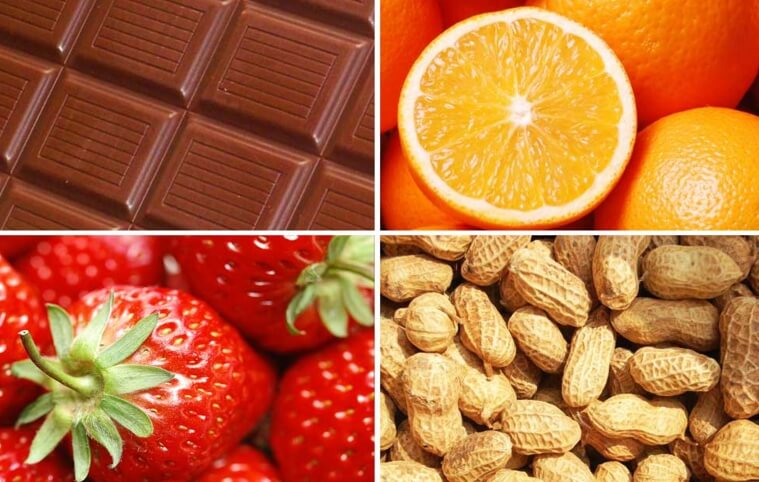
Allergy Prohibited Foods
There are foods that are categorically contraindicated for children with allergies. These products can seriously aggravate an allergy or provoke a new reaction. These include:
- Carbonated drinks;
- Duck, goose, beef meat;
- chicken eggs;
- Sausages;
- Fish and seafood;
- Smoked products;
- Cow's milk, cheese;
- Fruits, berries and vegetables of bright colors;
- Baking, baking with wheat flour;
- Sweets;
- Seasonings and sauces;
- Honey and bee products;
- Nuts (the most allergenic of them is peanuts);
- Rose hip;
- Citrus;
- Products with preservatives, dyes, flavors.
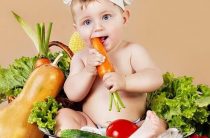
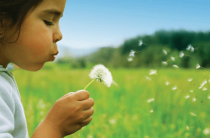


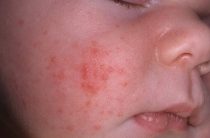
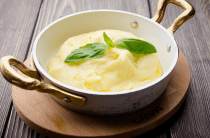


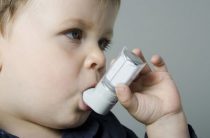







It is extremely illiterate to prescribe low-lactose or lactose-free mixtures in case of allergy to cow's milk proteins, because in these mixtures the protein is not modified and causes allergies as well as in standard ones. In case of allergies, only mixtures based on protein hydrolysates can be used.